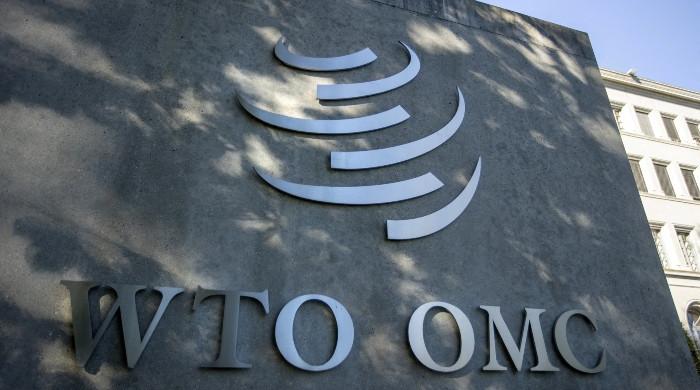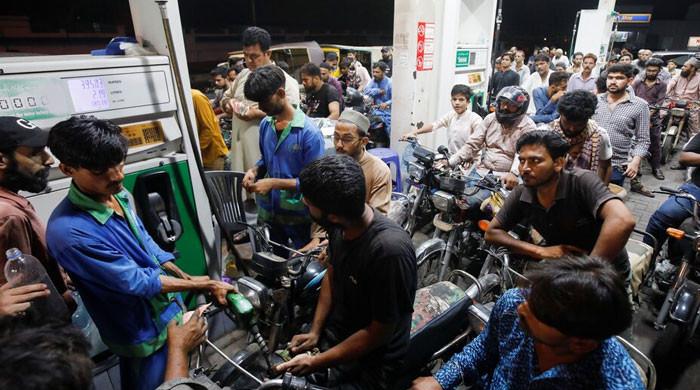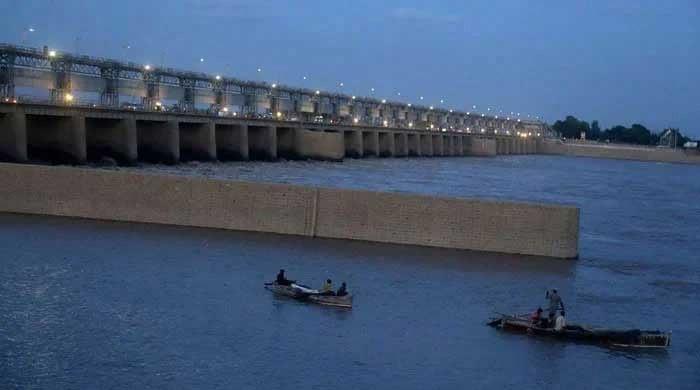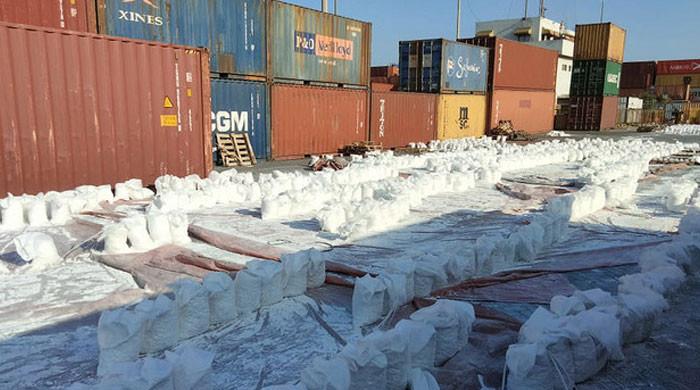The Indus must flow
IWT faces unprecedented challenges as India signals to unilaterally hold critical pact in abeyance, pushing our country into uncharted waters
April 26, 2025
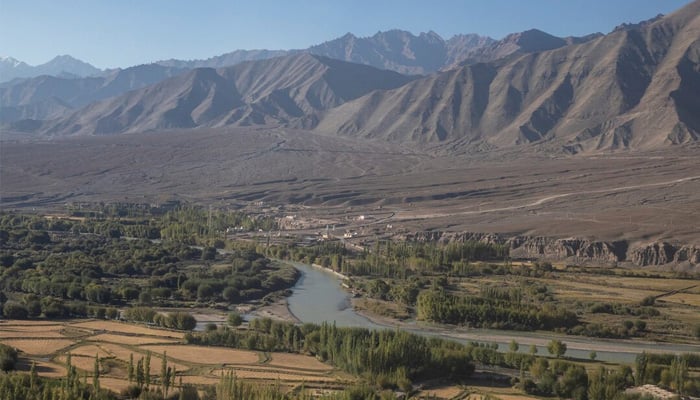
For decades, the Indus Waters Treaty (IWT) has stood resilient, surviving wars and political upheaval between Pakistan and India. It safeguarded a precious resource essential to Pakistan’s agriculture, economy, and energy security.
Today, that critical pact faces unprecedented challenges as India signals to unilaterally hold the IWT in abeyance, pushing our country into uncharted waters.
Pakistan’s dependence on the Indus River system cannot be overstated. Roughly 80 per cent of our agriculture depends on the Indus, Jhelum and Chenab rivers, and nearly a quarter of our economy hinges on this vital lifeline.
Major cities rely on these rivers for drinking water and sanitation, while hydropower projects like the Tarbela and Mangla dams provide nearly a third of our electricity. Any disruption, even slight, threatens not just food security but also our livelihoods.
Yet, despite India’s recent rhetoric, it is important to recognise that practically stopping the flow of these rivers overnight is beyond India’s immediate capability. Two of its dams, Kishanganga and Baglihar (and the third one, Ratle — in coming soon mode) are run-of-river dams constructed to produce electricity and not for water storage.
India currently lacks sufficient infrastructure, such as large storage dams and extensive canal systems, to significantly divert or withhold water. Any intended alteration of river flows would require massive construction projects spanning years, if not decades.
Beyond political and diplomatic hurdles, India faces substantial engineering, geological, seismic, seasonal and physical challenges. The Himalayan region, through which these rivers flow, is geologically fragile and highly susceptible to seismic activity.
Classified under seismic zones IV and V, it frequently experiences significant earthquakes, making large dam construction risky and potentially catastrophic. Large dams increase the risk of reservoir-induced seismicity, where the weight of accumulated water can trigger earthquakes by altering stress on geological fault lines.
From an engineering perspective, constructing infrastructure capable of significantly diverting large rivers in such mountainous terrains involves enormous logistical challenges. Massive dams and reservoirs require stable geological conditions, which are largely absent in these areas.
The rugged terrain and steep slopes also significantly complicate construction, greatly increasing both the cost and the time required for such infrastructure.
The laws of physics also present barriers. Redirecting vast volumes of water away from their natural course demands enormous energy and highly complex systems of tunnels and canals, which are both expensive and difficult to maintain.
Significant ecological disruptions, such as landslides triggered by seismic activity, could also lead to natural blockages or sudden reservoir breaches, causing catastrophic flooding downstream.
India’s recent actions will not significantly impact Pakistan’s water share through the three western rivers in the short term. From April to September, the seasonal flow of water in the Indus basin simply exceeds India’s storage limits; rather, it has to release surplus water to Pakistan from the three eastern rivers (where it has storage dams as per the IWT) during the monsoon season.
However, one cannot ignore India’s water aggression. India’s suspension of treaty obligations, especially regarding data-sharing and inspections, increases the uncertainty and unpredictability of water flows, making it difficult for Pakistan to plan its flood management, extensive canal-fed agricultural system, interprovincial water distribution, and electricity generation.
By unilaterally walking away from the IWT and defying the provisions of the treaty, India may pursue a gradual escalation strategy, incrementally building storage and diversion infrastructure that could alter water availability in the medium to long term.
This might include expanding existing hydroelectric projects, initiating construction of new dams with larger storage capacities, and incrementally increasing irrigation and water-use projects in Indian illegally Occupied Jammu and Kashmir (IIOJ&K).
In this scenario, Pakistan’s legal options, though limited, remain important. Internationally, India cannot simply abandon its treaty obligations without severe diplomatic repercussions. The Indus Waters Treaty does not contain provisions for unilateral withdrawal, making India’s current moves not only diplomatically reckless but also legally indefensible under international norms and the Vienna Convention of Treaties.
While Pakistan can engage international bodies like the World Bank and the International Court of Justice, realistically these institutions have limited enforcement power. They can facilitate dialogue and exert moral pressure but ultimately cannot compel India to abide by the treaty. Thus, Pakistan’s diplomatic strategy must realistically balance international advocacy with strong domestic action.
India’s unilateral action on the IWT risks eroding trust with its other neighbours. Countries like Bangladesh and Nepal, which share critical river basins with India, may reconsider their positions on water-sharing agreements, viewing India as a potentially unreliable partner. This erosion of trust could reshape regional alliances and diplomatic relationships in South Asia.
As Pakistan’s steadfast strategic ally, China will play a significant role in this unfolding drama. India’s attempt of water weaponisation could be self-harming, potentially inviting China to reconsider its approach to managing the Brahmaputra River, which flows from Tibet into India. Historically, the Brahmaputra has been a sensitive topic in Sino-Indian relations.
or instance, in 2016, during the Doklam border standoff, China temporarily halted sharing hydrological data on the Brahmaputra, a pointed reminder of India’s vulnerability.
Without any formal water-sharing agreement with India, China holds significant leverage and could use India’s current move as an international precedence to use its upstream position strategically.
Having said that, Pakistan cannot rely on external factors only. It will have to enhance its water storage and security by accelerating the completion of dams such as Diamer-Basha, Mohmand and Dasu. Technological adoptions for enhanced real-time river flow monitoring, investing in predictive hydrological modeling, and upgrading infrastructure resilience are key for better flood management.
All of the above measures will have to be supplemented by adopting advanced irrigation techniques and promoting widespread water conservation practices to safeguard against any potential unpredictability in water availability.
India’s recent moves should also serve as a clarion call for our polity. Water security must transcend political divides. As Pakistan faces both human-made threats and the unpredictable impacts of climate change, unity and clear-headed policymaking become indispensable.
The Indus waters have been nourishing the region we call Pakistan today for the last many centuries. Protecting this lifeline requires not only vigilance against external threats but also the resolve to implement solutions within our grasp.
The writer heads the Sustainable Development Policy Institute (SDPI) and is a member of the advisory board of the Asian Development Bank Institute. He tweets/posts @abidsuleri
Disclaimer: The viewpoints expressed in this piece are the writer's own and don't necessarily reflect Geo.tv's editorial policy.
Originally published in The News




